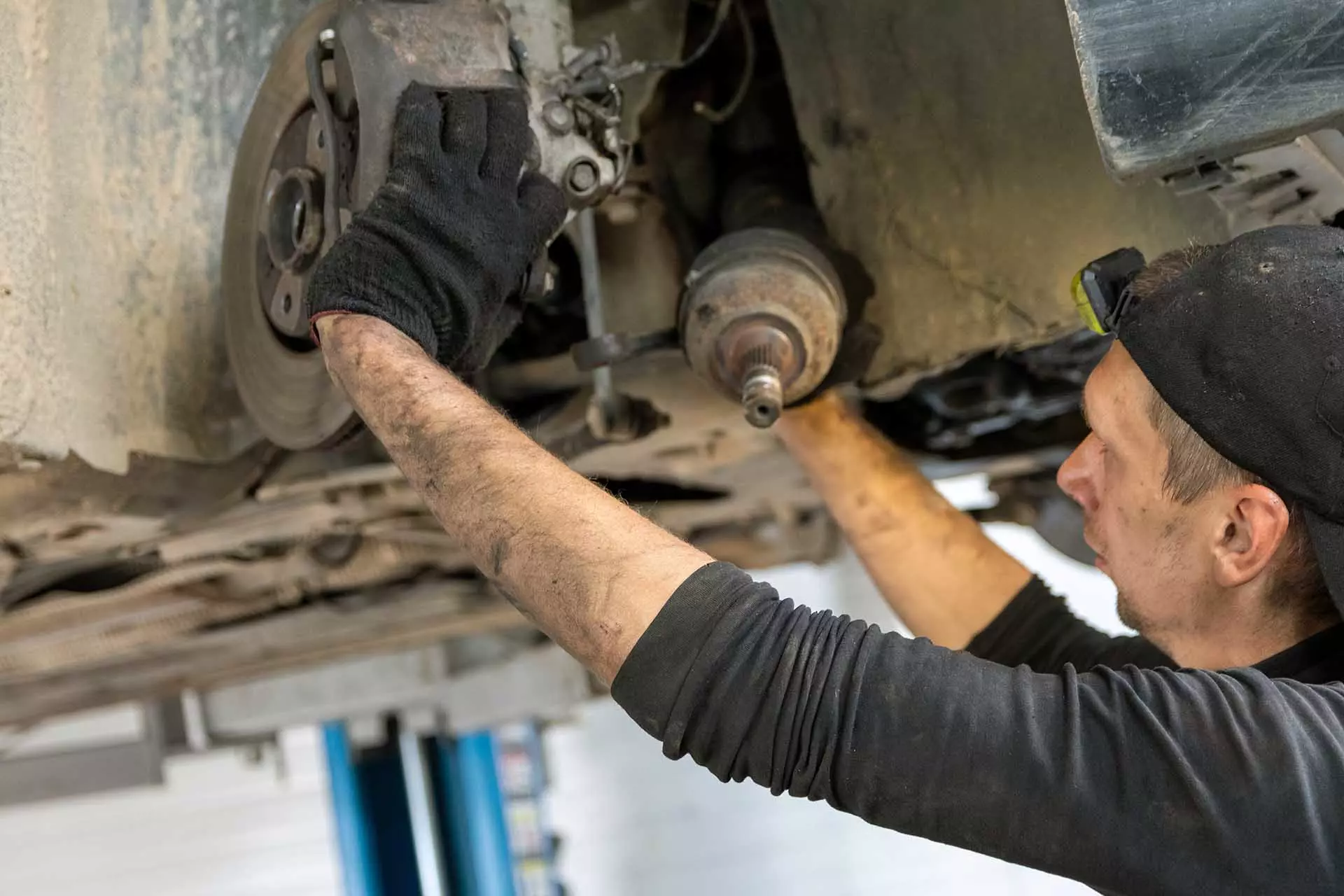To lengthen a driveshaft, you can use a driveshaft extension kit or have a custom driveshaft made to the appropriate length. These options are typically available at auto parts stores or through local mechanics.
A driveshaft is a critical component of a vehicle’s drivetrain that connects the transmission to the rear axle. Sometimes, a driveshaft may need to be lengthened or shortened due to modifications to the vehicle. This may occur if the vehicle has been lifted or lowered, or if a different transmission or axle has been installed.
A longer driveshaft allows for better clearance and improved performance. To lengthen a driveshaft, there are two common options: using a driveshaft extension kit or having a custom driveshaft made.
This article will discuss these options in detail.

Credit: haynes.com
Lengthening A Driveshaft: Step-By-Step Process
Lengthening a driveshaft is a complex and potentially dangerous task that should only be performed by experienced professionals or those with advanced mechanical skills. It’s crucial to maintain the structural integrity and balance of the driveshaft to prevent serious safety issues, including vibration, misalignment, and failure.
If you have a legitimate need to lengthen a driveshaft, such as adapting it to fit a different vehicle or transmission, consider consulting with a professional driveshaft shop or a mechanic with experience in this area. However, here are the general steps involved in lengthening a driveshaft:
- Measure and Mark:
- Identify the required lengthening distance. This may involve measuring the gap between the transmission and the differential or transfer case.
- Use a scribe or a marking tool to mark the exact point where you need to cut the driveshaft to achieve the desired length.
- Remove the Driveshaft:
- Safely lift the vehicle using a jack and secure it on jack stands.
- Disconnect the driveshaft from both the transmission and the differential or transfer case.
- Mark the positions of the yokes and universal joints to ensure proper reassembly.
- Cut the Driveshaft:
- Use a high-quality, properly-rated metal-cutting saw to carefully cut the driveshaft at the marked location. It’s essential to make a clean, straight cut to avoid imbalance.
- Welding:
- Insert an appropriate length of tubing or an extension piece into the cut driveshaft to achieve the desired length.
- Weld the extension securely to the original driveshaft. The weld should be strong and uniform to ensure the integrity of the assembly.
- If you’re not experienced with welding, it’s highly recommended to have a professional welder do this part.
- Balance the Driveshaft:
- Balance is critical to prevent vibrations and ensure safe operation. Take the modified driveshaft to a professional driveshaft shop for balancing.
- Reinstall the Driveshaft:
- Reattach the driveshaft to the transmission and the differential or transfer case, making sure the yokes and universal joints are properly aligned.
- Tighten all bolts and fasteners to the manufacturer’s specifications.
- Test and Inspect:
- Carefully test the vehicle for vibrations and other issues. If you experience any problems, it’s essential to address them immediately.
- Maintenance:
- Regularly inspect and maintain the lengthened driveshaft to ensure it remains in good condition.
Remember, this is not a DIY job for beginners, and it’s best to entrust a professional driveshaft shop or a skilled mechanic with the expertise and equipment to lengthen a driveshaft properly. Safety is paramount when working on vehicle components like the driveshaft, as improper modifications can lead to accidents and damage.
How To Shorten A Driveshaft – Two Minute Tech
Tips For Maintaining A Lengthened Driveshaft
Regular inspection and maintenance are essential for lengthened driveshafts. Check for signs of wear and tear, such as cracks or deformation in the driveshaft. When vibrations occur, or your vehicle produces an unusual noise, inspect the driveshaft immediately. Repacking the universal joints with grease can help to prevent wear and costly damages.
As a safeguard, replace the entire driveshaft at the first instance of observed wear and tear. Avoid common mistakes like over-tightening the u-bolts, which can also lead to damage and failure. Keep your driveshaft lubricated, clean, and free from any leakages.
These tips will help you to maintain the performance of your lengthened driveshaft, thereby extending the lifespan of your vehicle.
Frequently Asked Questions Of How To Lengthen A Driveshaft
How Do You Determine When To Lengthen A Driveshaft?
The driveshaft should be lengthened when a lift or lowering kit is installed.
Can A Driveshaft Be Lengthened By Welding?
No, driveshaft lengthening requires cutting and adding a piece of tubing.
What Kind Of Equipment Is Needed To Lengthen A Driveshaft?
A lathe, hydraulic press, and a welder are necessary to lengthen a driveshaft.
Conclusion
After reading this comprehensive guide on how to lengthen a driveshaft, you should now have a clear understanding of the steps involved in the process. It is crucial to remember that safety should always be a top priority when working with machinery and modifying parts.
Additionally, ensuring the correct measurements and following proper installation techniques is essential to achieving a successful outcome. With the right tools and expertise, this task can be easily accomplished, allowing you to customize your driveshaft to your specific needs. By carefully following the steps outlined in this guide, you can confidently lengthen your driveshaft and take your vehicle to the next level.
Always remember to refer back to this guide if you need a refresher or need to undertake a new driveshaft project.
